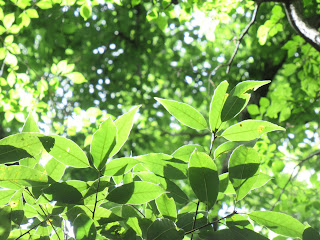The Empress of Japan, Empress Masako, was a career diplomat and an econometrist, before she got married with the then-crown prince. Her father was also a career diplomat. She spent her younger years abroad, like in Moscow, Geneva and NY. She was not a type engaging in Japanese traditional agriculture. Even though, now she’s in charge of nurturing the most traditional silkworms, called Koishimaru 小石丸. These hungry caterpillars produce thinner silk threads with characteristic twist. They can make exquisite silk robes of noble luster. Taking care of silkworms in Imperial Palace is the official duty of Empress. Why? The tradition was started in 1871 by Empress Shoken 昭憲皇太后. At that time, Japan was struggling to be counted as an “honorable nation” in Euro-American centered international politics. As always for achieving such ambition, money was important. Japan did not have the latest technology of steam engine or the like but could produce silk. Very luckily for Japan, during the late 19th century European silk industry was devasted by pebrine that annihilated European silkworms. In addition, China, the birth country of silk industry some 5000 years ago, was in a serious mess due to colonial invasion of Westerners. It made China difficult to produce enough silk for export. Japanese government saw the opportunity. They took industrial policy of silk industry for trade. And so, the Empress herself was showing the “example” of economic development to the nation. It was a jackpot. Around 1900, Japan became the number 1 exporter of silk in the world. It brought handsome profit. With the money from silkworms, Japan built large military and plunged into the World War II. Until 1941, the year of “Remember Peral Harbor,” silk was the number one earner of hard currency for Japan.
Yokohama, the largest international port of Japan since the 1850 until the 1970s (currently, the largest is the Port of Tokyo), played a crucial role for silk trade. The main silk producing regions in Japan were in South Tohoku, North Kanto, Yamanashi, and Nagano. The product was agglomerated in the City of Hachioji and carried to the Port of Yokohama. From here, Japanese silk was sold globally. The road, the present-day National Route 16, between Hachioji and Yokohama became Japanese Silk Road. It runs along the southwest edge of Tama Hills 多摩丘陵 where Niiharu Citizen Forest 新治市民の森 locates. The area has lots of small hills and streams that were too small and not so good for competitive rice paddies or veggie field. But mulberries for silkworms grew well. People lived between the two cities watched the traffic of impressive wealth at the front row, and inevitably thought “Hey, why not nurturing silkworms that can bring fortune for me?” There was a craze at that time in Hachioji, Sagamihara, Kawasaki, Machida, and Yokohama to be sericultural farmer. From the late 19th centuries to the first half of the 20th centuries, the scenery along the road between Hachioji and Yokohama was of mulberry orchards for silk.
 |
| Tourists’ heavy part of the Port of Yokohama, 21st century |
After the World War II, silk lost its shine to synthetic fabrics like nylon. Japanese silk never became the protagonist for Japanese economic growth after 1945. Many farmers in Yokohama along Japanese Silk Road abandoned their silkworm business, moved on to another produce, or sold their land for urban development. Yet still the greenery in Yokohama’s north forests has lots of mulberry trees that originated from the abandoned orchards some 70 years ago. I tell you, mulberries are not “wall flowers.” From late May to June, they bear lots of sweet berries loved by city birds. They bombarded the forests by mulberry seeds in their poop. Mulberries are multiplying in our city.
May 2021 is the bumper year for mulberries, and visitors to Niiharu Forest. Under the State of Emergency in Tokyo, families, couples, group of friends, etc. come to the forest with picnic blankets and lunches. Mulberries started to have ripen at around the middle of the month. I don’t know how it was initiated exactly, but we Lovers met many families had merry snack time under fecund mulberry trees. “Dad, could you pick that one for me?” “OK, yeah, those branches receiving more sunshine may have more ripen fruits …” “I cannot reach to that high!” They had sweet sticky fingers and lips with blue-tinted purple colors. They looked happy. Some even come to us to inquire “Which tree is the sweetest?” Wow. They enjoy mulberries like very hungry caterpillars for mulberry leaves.
Last weekend I asked one of my senior volunteers. “Will they continue to visit Niiharu after COVID?” He was rather cynical. “Well, once Tokyo Disney Land resumes their business for full-capacity, and shopping centers serve dinner till 23:00 as before, they won’t come to Niiharu.” Ah … Maybe. But the office for Empress keeps the sericulture tradition long-after the silk stopped being the main export of Japan. Some of the visitors today might return Niiharu Forest in future May for sweet mulberries. The other could remember forest nearby is a precious place of relaxing picnic. I’m keeping my fingers crossed.
If you find a problem in the greenery of north-half of Yokohama, please make a contact with
Office for the Park Greeneries in the North
北部公園緑地事務所
Yokohama Municipal Government Creative Environment Policy Bureau
横浜市環境創造局
Phone: 045-311-2016
FAX: 045-316-8420
Niiharu Administrative Office / Satoyama Exchange Center
新治管理事務所・里山交流センター
Phone: 045-931-4947
Fax: 045-937-0898
Email: info@niiharu.jp
http://www.niiharu.jp/









































